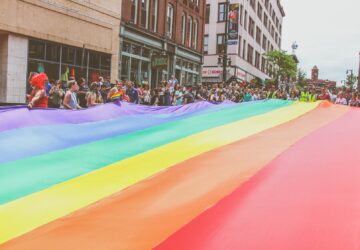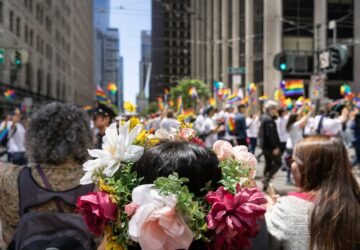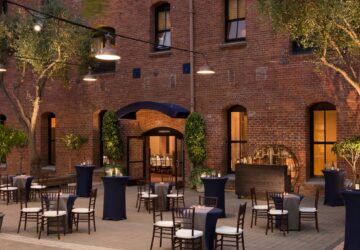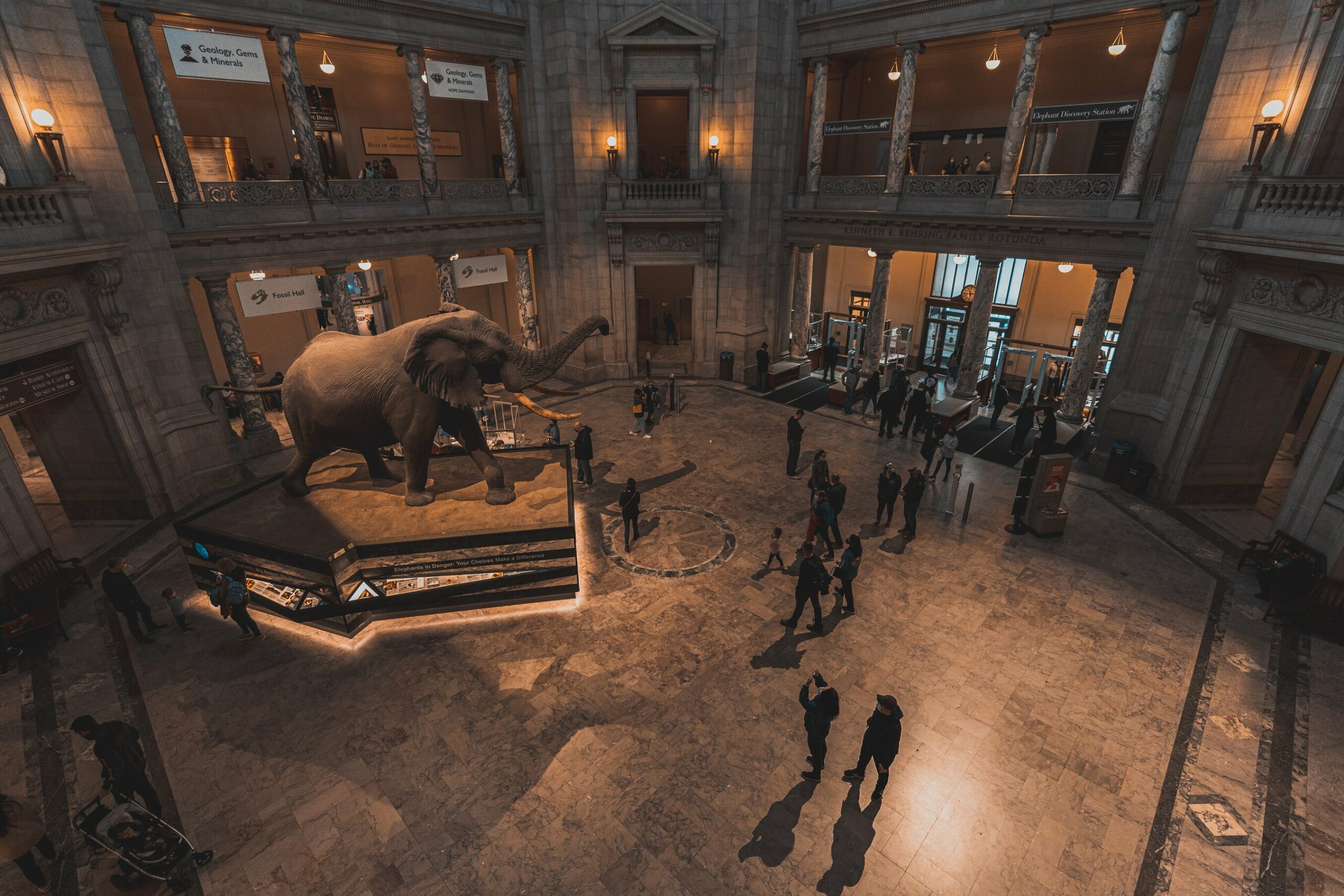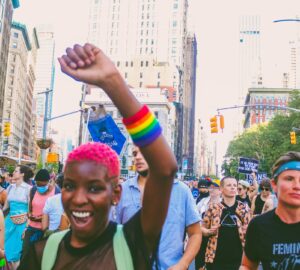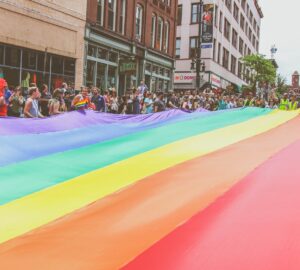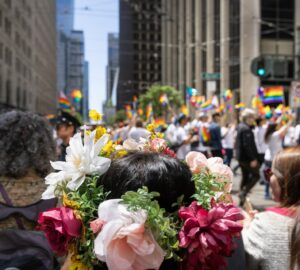Are you on the hunt for an out-of-this-world cultural experience while in Washington, D.C.? If you are then look no further! In this blog post, we listed down 20 of the most breathtaking museums you can find in Washington, D.C.
Washington, D.C. has over 70 unique museums to explore—they all offer something unique and interesting. From world-renowned art museums to fascinating history museums, there is something for everyone.
1. National Museum of the American Indian
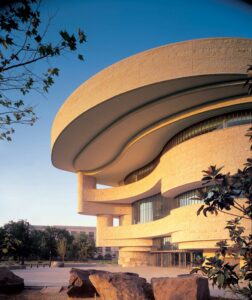
The National Museum of the American Indian provides a remarkable presence—the curved shape of the structure resembles a wind-swept mesa. In it anyway can explore Indigenous peoples’ rich, varied, and dynamic history and cultures across the Western Hemisphere.
The museum’s architecture, native landscape, and installations, all of which were created in collaboration with American Indian, Alaska Native, and Native Hawaiian tribes and communities, provide visitors with a greater shared human experience by providing a better understanding of Native peoples.
Further representations of Native sensibility include the museum’s east-facing entrance, prism glass, and 120-foot-high Potomac atrium chambers.
2. National Children’s Museum
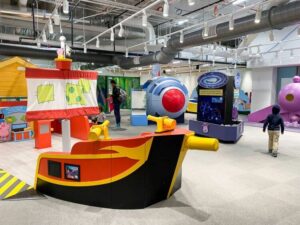
The National Children’s Museum is a hands-on museum where kids can explore, play, and learn.
The museum has interactive exhibits on art, science, and culture. Their hands-on area awakens curiosity and motivates young children to explore science, technology, engineering, arts, and math (or STEAM) through quirky displays and engaging programming, combining the science center curriculum with a children’s museum experience.
In addition to its many interactive exhibits, the National Children’s Museum also has a theater, an art studio, and a cafe.
3. The Smithsonian National Postal Museum
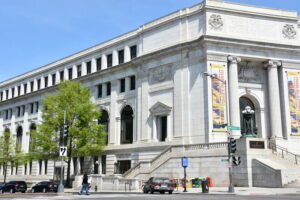
The Smithsonian National Postal Museum is dedicated to the colorful and interesting history of the country’s mail service; not to mention it houses the world’s largest and most complete stamp and philatelic collection.
The museum is ideal for many types of events, from galas and seated dinners to cocktail receptions, seminars, and business meetings, and is located just steps from bustling Union Station in the center of Capitol Hill.
Three historic airmail planes are suspended high above guests in the breathtaking 90-foot high Atrium, while the Historic Lobby is a majestic, Beaux-Arts-style hall with a rosette ceiling and elegant marble floors and columns.
4. George Washington’s Mount Vernon
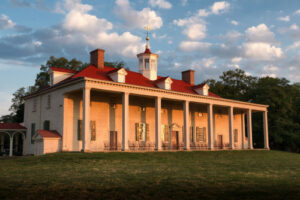
Mount Vernon, the home of George Washington, is one of the most visited historic sites in the United States.
The 18th-century plantation home of America’s first president, George Washington, is situated on 22 acres along the Potomac River.
Visitors can explore the mansion, outbuildings, museum, and grounds, which include gardens, a working farm, and museum galleries.
In addition to the mansion and grounds, Mount Vernon also has an education center, library, and research center. The estate is open daily from April to November.
5. Smithsonian American Art Museum
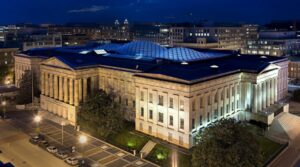
The Smithsonian American Art Museum houses one of the world’s most important and comprehensive collections of American art. Its pieces of art depict America’s rich aesthetic and cultural history from the colonial era to the present day.
The museum has an extensive collection of paintings, sculptures, prints, photographs, and more. The museum also has a research center and library.
In addition to its permanent collections, the Smithsonian American Art Museum also has rotating exhibitions.
6. The Basilica of the National Shrine of the Immaculate Conception
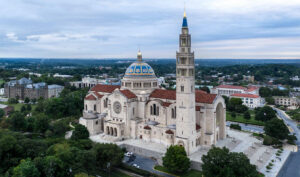
The Basilica of the National Shrine of the Immaculate Conception is one of the ten largest cathedrals in the world and the largest Roman Catholic church in the United States and North America.
The Basilica is the nation’s greatest Marian shrine, dedicated to the Blessed Virgin Mary under her title of the Immaculate Conception, as designated by the United States Conference of Catholic Bishops as a National Sanctuary of Prayer and Pilgrimage. It is affectionately referred to as the Catholic Church of America.
The Basilica, albeit essentially American, rivals the great sanctuaries of Europe and the world, and has been visited by Pope Francis, Pope Benedict XVI, Saint John Paul II, and Saint Teresa of Calcutta, among others.
7. National Law Enforcement Museum
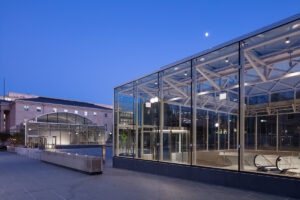
The National Law Enforcement Museum will be the first national museum dedicated to telling the narrative of American law enforcement to have a permanent home in our nation’s capital, at Judiciary Square and next to Capital One Arena.
The museum has interactive exhibits on all aspects of law enforcement, from crime scene investigation to forensics to policing tactics and strategies. Artifacts from their collection of over 20,000 objects tell the story of American law enforcement’s past, present, and future. It engages visitors of all ages in memorable, immersive, and engaging displays within the Museum’s distinctively contemporary exterior.
8. President Lincoln’s Cottage
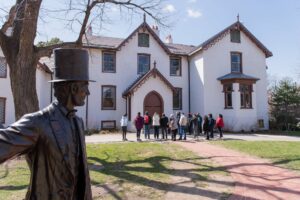
President Lincoln’s Cottage is the only presidential home in Washington, D.C., that visitors can walk through and experience as it would have looked during Abraham Lincoln’s residency.
The cottage was originally built in 1842 as a one-room structure and served as both home and office for President Lincoln and his family from June to November of each year while they were in Washington, D.C.
The cottage was where President Lincoln drafted the Emancipation Proclamation and is also where he met with his cabinet and Generals Grant and Sherman in 1864 to plan the final stages of the Civil War.
9. Clara Barton Missing Soldiers Office Museum
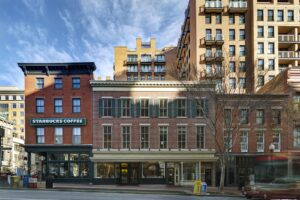
The Clara Barton Missing Soldiers Office Museum is the last surviving building associated with Clara Barton’s work searching for missing soldiers after the Civil War.
The restored rooms and belongings from when Clara Barton remained at this location during and immediately after the Civil War are on the third story, which is located on 7th Street, NW. She used this house not only as her home, but also as a storage facility for the goods she received for her work on the battlefields, and eventually as an office to process missing soldier communications.
Under 1865, Barton hired people and established the Office of Correspondence with the Friends of the United States Army’s Missing Men in this structure. Barton championed the cause of bereaved parents, family members, and friends whose husbands, sons, brothers, and neighbors had vanished.
She answered to approximately 63,000 letters, most of which necessitated some form of inquiry, which eventually resulted in published lists of the missing identities. Barton could be contacted by anyone with information regarding their whereabouts or death. She and her employees had identified the fate of over 22,000 men by the time the office closed in 1868.
10. German–American Heritage Museum
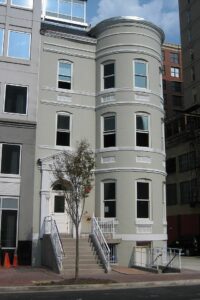
The German-American Heritage Museum is the only national museum dedicated to honoring, displaying, and recognizing the accomplishments of immigrants who immigrated to America from German-speaking nations and succeeded in achieving the American dream. It uses a chronology that runs the length of the exhibition hall to chart their progress. The 400-year presence of German speakers in America, which began in the 1600s, is depicted in this timeline.
As one enters the museum, a set of stairs with the names and faces of notable German-Americans greets visitors and invites them to climb to the second floor, where they will find a series of panels detailing the various periods in American history where German-Americans have had a significant impact.
11. Tudor Place Historic House & Garden
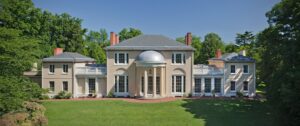
Tudor Place is a historic house and garden in Washington, D.C., that was originally built for Martha Custis Peter and Thomas Peters, a wealthy planter from Virginia and his wife. The house was designed by architect William Thornton, who also designed the U.S. Capitol building.
The mansion is located on a hill overlooking Georgetown University and the Potomac River. The house and gardens are open to the public for tours Wednesday through Sunday.
12. Old Korean Legation Museum
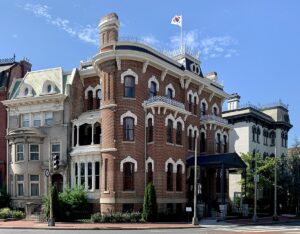
The Old Korean Legation Museum is a museum located in the historic district of Washington, D.C. The museum is housed in the former Korean legation building, which was built in 1875 and served as the first diplomatic mission from Korea to the United States.
The museum tells the story of early Korean-American relations through a variety of exhibits, including art, photographs, and artifacts from the legation period. The museum is open to the public Tuesday through Saturday.
13. International Spy Museum
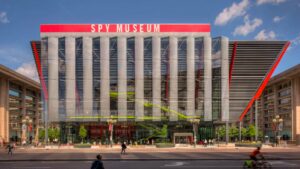
The International Spy Museum is the only museum in the world dedicated to espionage and the only one in Washington, D.C. It contains more than 700 spy artifacts from around the world, including items from both famous spies and infamous intelligence failures.
The museum offers interactive exhibits that allow visitors to experience what it’s like to be a spy, as well as a variety of educational programs for adults and children.
14. Museum of the Bible
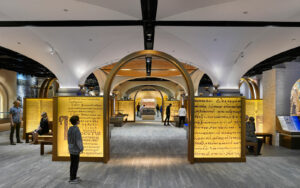
The Museum of the Bible in Washington, D.C. opened in November 2017. The museum is dedicated to telling the story of the Bible and its impact on world history.
The museum has three main sections: the history of the Bible, how it’s been used throughout history, and its impact on culture. It also has a variety of interactive exhibits, including a reproduction of the Gutenberg press and a digital wall that displays images from the Bible.
15. Hirshhorn Museum & Sculpture Garden
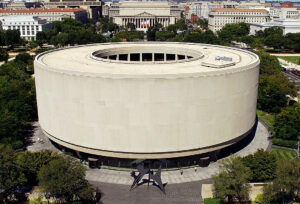
The Hirshhorn Museum and Sculpture Garden, located on the National Mall with views of the US Capitol and the Washington Monument, attracts more than 750,000 people each year, making it one of the country’s most popular art museums.
Since its establishment in 1974, the Hirshhorn has served as a focal point for the creative community and a driving force in bringing worldwide modern and contemporary art to the nation’s capital.
The Hirshhorn’s remarkable circular edifice on the Mall, a Washington icon, is the ideal site for hosting big social events. Enjoy a reception near the lit fountain on the Plaza or take a walk through the gardens and display halls.
16. The United States Holocaust Memorial Museum
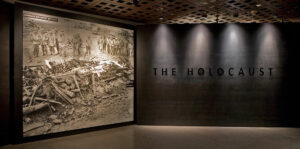
The United States Holocaust Memorial Museum is the largest genocide museum in the world. It commemorates the six million Jews who were killed in the Holocaust as well as millions of others who were persecuted by the Nazis, including Roma (Gypsies), homosexuals, and people with disabilities.
The museum has a variety of exhibits that tell the story of the Holocaust, including a room filled with shoes taken from people who were killed in concentration camps. It also has an exhibit on how the Holocaust has been remembered and commemorated over the years.
17. The Frederick Douglass National Historic Site
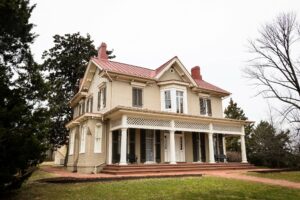
The Frederick Douglass National Historic Site is a museum and historic site in Washington, D.C., that commemorates the life of abolitionist Frederick Douglass. The site contains Douglass’s home from 1877 to 1895, as well as a research center that houses a library and archive dedicated to Douglass’s life and work.
The museum offers a variety of programs and exhibits that tell the story of Douglass’s life, including his work as an abolitionist, civil rights leader, and writer.
18. Chinese American Museum
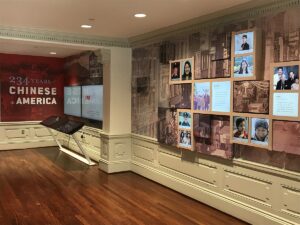
The establishment of a new museum to preserve, showcase and lead a meaningful discussion about the Chinese American experience—its history, culture, and contributions to our country and the world. This is a museum about you, whether you are of Chinese descent or not.
The museum has a variety of exhibits on topics such as the history of Chinese immigration, the Chinatown experience, and the contributions of Chinese Americans to American society. Hear inspirational stories of American dreams, resilience, and fortitude while experiencing an American story that is part of our shared heritage.
19. The Phillips Collection
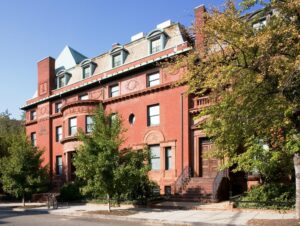
The Phillips Collection is an art museum in Washington, D.C., that was founded in 1921 by Duncan Phillips. The collection includes works by Renoir, Cézanne, van Gogh, and other impressionist and modern artists.
The museum also has a variety of programs and events, including concerts, lectures, and films. Phillips Collection is one of the most popular art museums in Washington, D.C., attracting more than 400,000 visitors each year.
20. National Geographic Museum
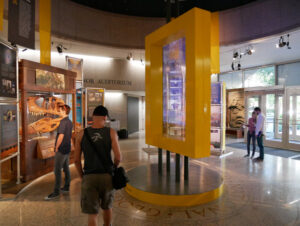
The National Geographic Museum is a museum in Washington, D.C., that celebrates the work of the National Geographic Society. The museum has a variety of exhibits on topics such as geography, archaeology, history, and culture.
One of the museum’s most popular exhibits is “Genghis Khan: The Exhibition,” which tells the story of the life and conquests of Genghis Khan. The museum also has an IMAX theater that shows documentaries produced by National Geographic.
These are only a few of the many museums in Washington D.C. that are worth visiting. With so much history and culture on display, Washington D.C. is a great place for anyone interested in learning more about our country and the world around us.
So, next time you’re looking for something to do, be sure to check out one of these museums! You won’t be disappointed.
What are some of your favorite museums in Washington D.C.? Let us know!

